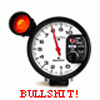Plenums and runner tube length?
Announcements
-
Similar Content
-
Latest Posts
-
By GabsReDeal · Posted
We import a lot of cars from Japan. I'd say that approximately 20% of our traffic is imported JDM cars (mainly consumer cars like the Mazda Demio, Toyota Yaris, Honda Fit, Suzuki Swift, etc.). We also import a lot from the UK, but this has decreased after Brexit. Apart from the consumer vehicles, two of the larger, well-known dealerships frequently import iconic '80s/'90s JDM cars. I haven't heard of anyone importing from Australia, and they are not advertised (unlike Japanese ones), despite a lot of Maltese migrating to Australia in the '50s and '60s. -
Looking good man, dash mash is smart to ensure you don't get the dreaded bubble.
-
Shit same here hence my first reply. Immediately thought RB
-
Gabriel, with Malta driving on RHD side, same as us, are Jap imports popular? Do you get any Aussie cars? Have seen a photo of a VN Commodore that found its way there
-
I imagine 20 years ago every post about this car would be "why bother with NA" and "RB25 swap!"
-







Recommended Posts
Create an account or sign in to comment
You need to be a member in order to leave a comment
Create an account
Sign up for a new account in our community. It's easy!
Register a new accountSign in
Already have an account? Sign in here.
Sign In Now